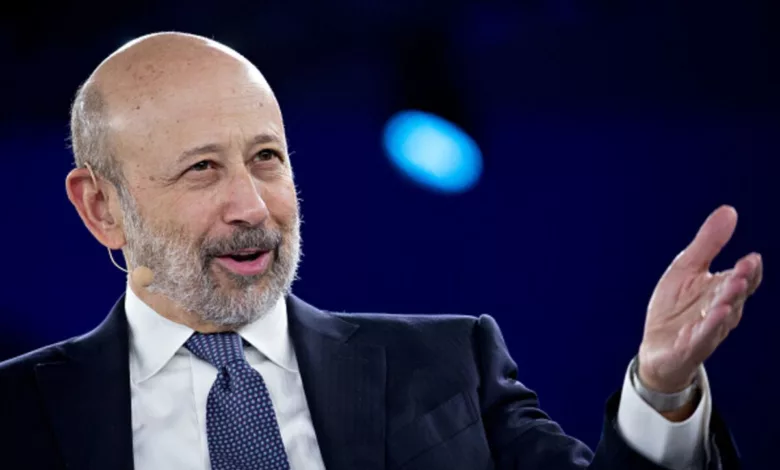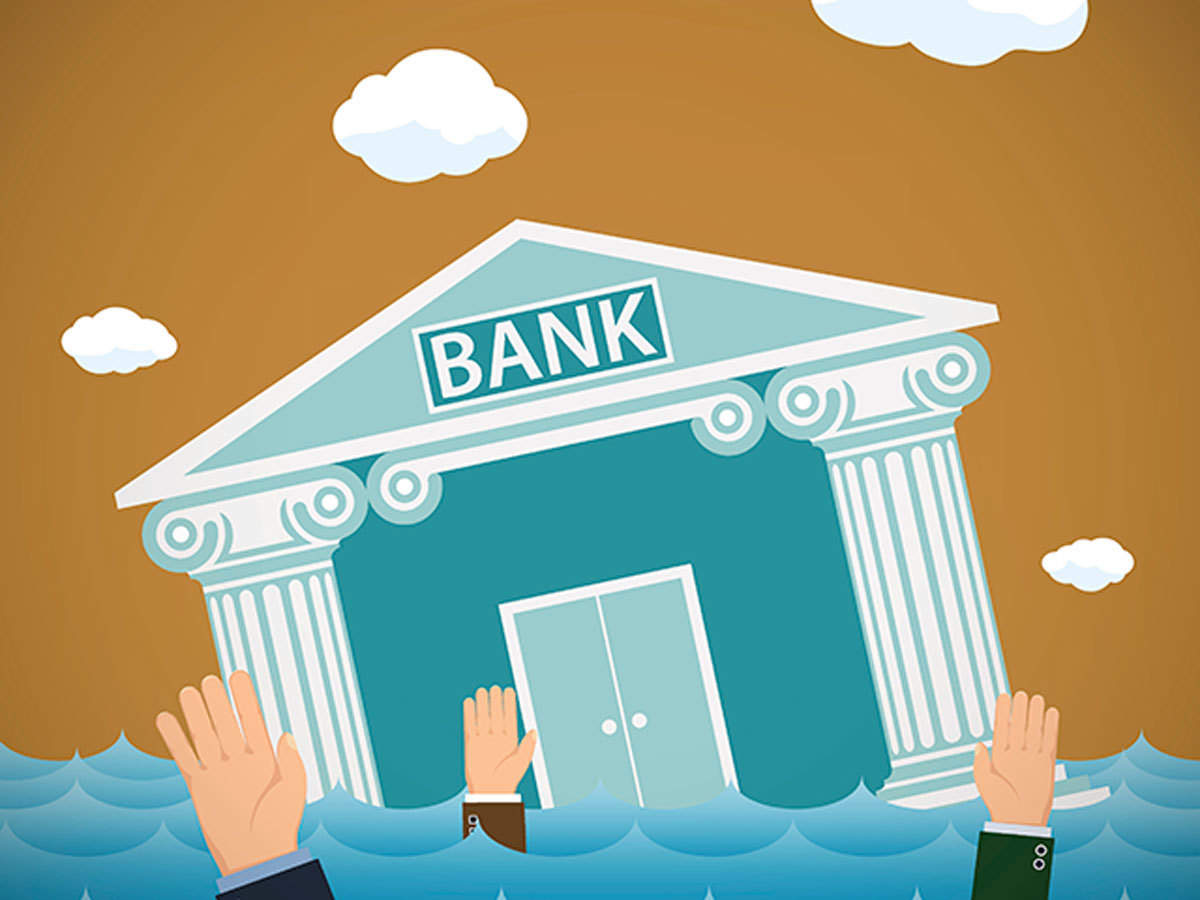Ex-Goldman Sachs CEO Warns Of Looming US Banking Crisis To Slow Economic Growth.
Goldman Sachs Research experts reduced their projection for US fourth-quarter GDP growth (year-over-year) by 0.3 percentage points to 1.2%, despite the fact that the macroeconomic effects of a slowdown in lending are unknown until the extent of the stress on the banking sector is clear.

Ex-Goldman Sachs CEO Warns of Looming US Banking Crisis To Slow Economic Growth.
According to former Goldman Sachs (GS.N) CEO Lloyd Blankfein, the US financial crisis will hasten the overall credit-tightening process and slow the nation’s growth.
“It is a given that this will result in, and will act in a manner somewhat akin to a rate increase. Banks would need to manage their equity because of the pressure, the pressure, and uncertainty. “In an interview with CNN on Sunday, Blankfein said.
“On their existing deposits, they’ll lend less. Hence, the credit will already be reduced. Fewer credit results in slower growth. Consequently, some of the Fed’s efforts to slow the economy will be made here, “said the former CEO of Goldman Sachs.
When Silicon Valley Bank (SIVB.O) and Signature Bank (SBNY.O) crashed earlier in March, the value of financial equities fell by billions of dollars. United States Vice President Joe Biden stated on Friday that the banking crisis had subsided. Also, he assured Americans that their deposits were secure.

Federal Reserve Chair Jerome Powell is in a “difficult place,” according to Gary Cohn, a former CEO of Goldman Sachs and advisor on economic matters to former President Donald Trump. Cohn said, as reported by CBS News.
Both Cohn and Blankfein agreed that the Fed would raise interest rates by 0.25% next week, but they also noted that the institution might need to take a break and reevaluate later to give itself breathing room.
“More than 70% of investors expect the Fed to increase interest rates by 25 basis points. Personally, I believe that stopping here would be appropriate, “said Blankfein to CNN.
The former bank’s economics department was among the first to forecast that the Fed would decide against raising interest rates at its meeting this week on Tuesday and Wednesday due to the instability in the banking industry.
But according to futures markets as of Friday, there was a better than even chance that the Fed would proceed with a 25 basis point rise. This was also the conclusion of a Friday Reuters survey of analysts.
Now, 60% of investors are pricing in a 25 basis point rate increase by the Fed on Wednesday, with the remaining 40% betting against it. Numerous business leaders said that the central bank should give financial stability top priority right once.
“I believe (Fed Chair Powell) will leave himself a lot of flexibility in forward meetings to do whatever they need to do, which may be a pause, possibly cut, or possibly hike depending on how inflation is moving in the United States,” Cohn said on Sunday.
A crisis among small banks is expected to impede the US economy.
According to Goldman Sachs Research, this year’s economic growth will be less than predicted as stress spreads through smaller banks in the US and lending rules are tightened by those institutions.
Goldman Sachs Research experts reduced their projection for US fourth-quarter GDP growth (year-over-year) by 0.3 percentage points to 1.2%, despite the fact that the macroeconomic effects of a slowdown in lending are unknown until the extent of the stress on the banking sector is clear.

The updated projection takes into account predictions for tighter lending standards and partially accounts for a bigger drop in investment spending. The US economy depends heavily on small- and medium-sized banks.
According to a study by Goldman Sachs economists Manuel Abecasis and David Mericle, lenders with less than $250 billion in assets account for about 50% of commercial and industrial lending in the United States, 60% of residential real estate lending, 80% of commercial real estate lending, and 45% of consumer lending.
If the banking crisis that began with Silicon Valley Bank’s bankruptcy has an effect on lending, it is most likely to be concentrated in a limited number of small- and medium-sized banks.
Although the two banks that were placed in receivership only account for 1% of all bank lending, banks with high loan-to-deposit ratios account for 20% of lending, while banks with low proportions of FDIC-insured deposits and retail deposits account for 7% and 4%, respectively.
Our economists predict that lending criteria will tighten more, although to a lesser extent than they did during the dot-com crisis or at the height of the pandemic. “Bank lending criteria had already tightened dramatically over the last few quarters to levels historically unknown outside of recessions, possibly because many bank risk divisions shared the recession fears that have been widely expressed in financial markets,” they said.
The additional impact of further tightening brought on by recent small bank stress may be less significant than it initially appears because this indicates that lending criteria began off tight rather than at a typical level.
Our economists made the assumption that small banks with a low share of FDIC-covered deposits would reduce new lending by 40% and other small banks would reduce new lending by 15% when analysing the economic effects of tighter lending requirements. According to economic research, this indicates a 2.5% drag on total bank lending, which would reduce 2023 GDP growth by 0.25 percentage points.
Using a statistical technique, they add bank lending rules, which they anticipate will become significantly more stringent, to Goldman Sachs Research’s financial conditions and growth impetus model. This suggests a further 0.5 percentage point drag on GDP growth from what is already shown by the lagged effect of the tightening in recent quarters.
The Federal Reserve‘s monetary regulator would strive to keep consumption below capacity to maintain the trajectory of supply and demand equilibrium in the upcoming year unless bank pressure dramatically changes the scenario. The task of controlling the expansion of demand is shared between tighter monetary policy and more stringent requirements for bank lending.

The gradual tightening of lending criteria that our economists anticipate will occur as a result of the stress experienced by small banks would have an effect on development that is comparable to that of rate increases of 25 to 50 basis points via their influence on market-based financial conditions, as determined by the calculations of our economists.
In light of this, Goldman Sachs economists have noted a halt in Fed rises for the meeting on March 21–22. They foresee a peak funds rate of 5.25–5.5% but caution that the uncertainty surrounding the Fed’s future course has dramatically increased. They have otherwise maintained their previous Fed projection.
Edited by Prakriti Arora




